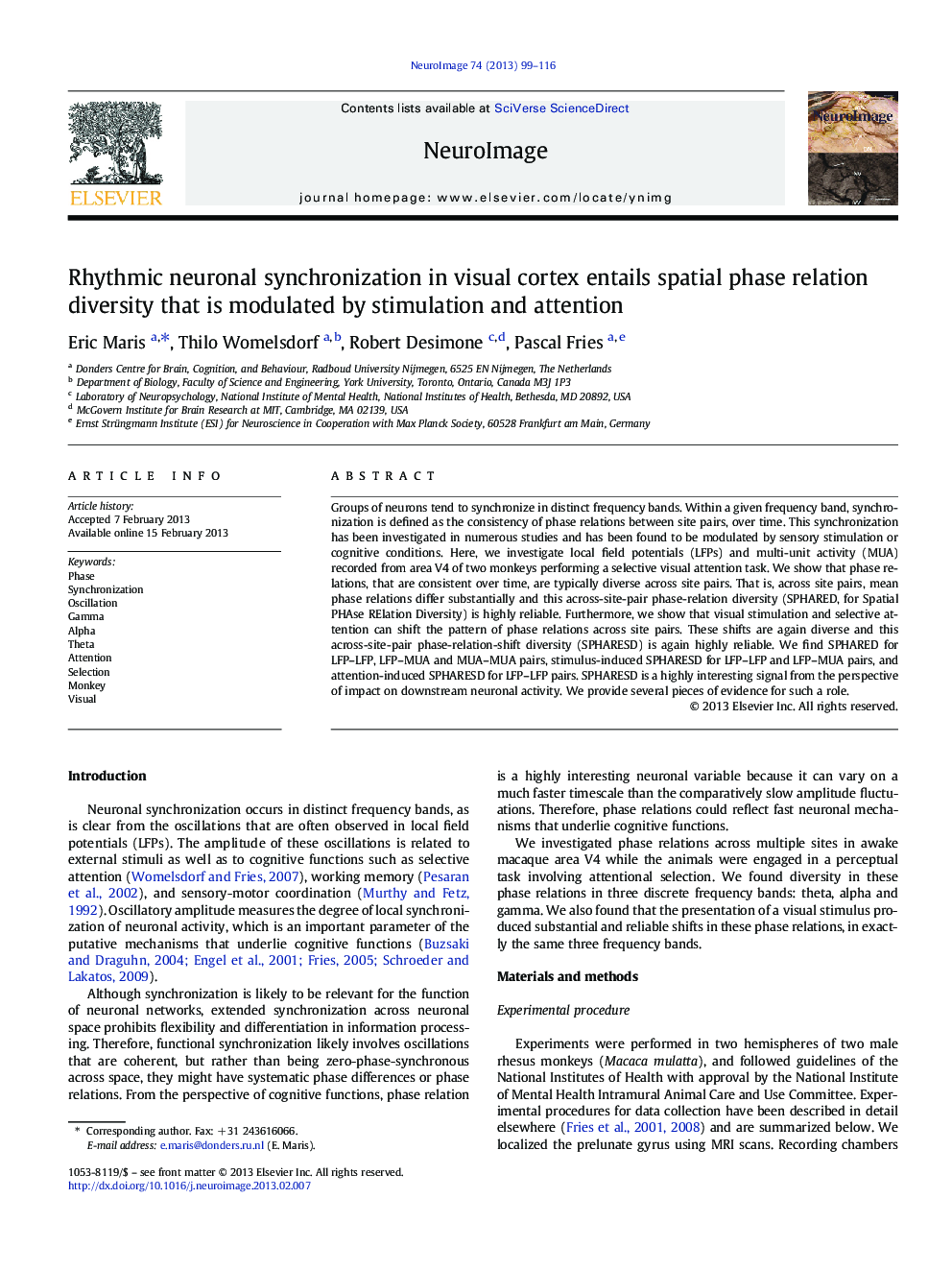| Article ID | Journal | Published Year | Pages | File Type |
|---|---|---|---|---|
| 6029779 | NeuroImage | 2013 | 18 Pages |
Groups of neurons tend to synchronize in distinct frequency bands. Within a given frequency band, synchronization is defined as the consistency of phase relations between site pairs, over time. This synchronization has been investigated in numerous studies and has been found to be modulated by sensory stimulation or cognitive conditions. Here, we investigate local field potentials (LFPs) and multi-unit activity (MUA) recorded from area V4 of two monkeys performing a selective visual attention task. We show that phase relations, that are consistent over time, are typically diverse across site pairs. That is, across site pairs, mean phase relations differ substantially and this across-site-pair phase-relation diversity (SPHARED, for Spatial PHAse RElation Diversity) is highly reliable. Furthermore, we show that visual stimulation and selective attention can shift the pattern of phase relations across site pairs. These shifts are again diverse and this across-site-pair phase-relation-shift diversity (SPHARESD) is again highly reliable. We find SPHARED for LFP-LFP, LFP-MUA and MUA-MUA pairs, stimulus-induced SPHARESD for LFP-LFP and LFP-MUA pairs, and attention-induced SPHARESD for LFP-LFP pairs. SPHARESD is a highly interesting signal from the perspective of impact on downstream neuronal activity. We provide several pieces of evidence for such a role.
⺠Across site pairs, LFP-LFP and LFP-MUA phase relations differ and are very reliable. ⺠Visual stimulation and attention induce reliable shifts in these phase relations. ⺠This may reflect mechanisms that use time relations for the routing of information.
